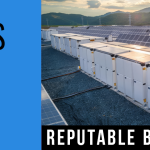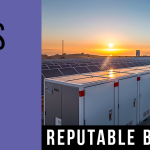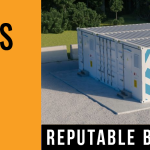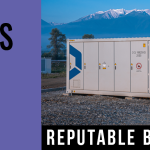 Alternate energy has this one major flaw. It is very weather dependent. It depends so much on whether the sun is shining or the wind is blowing. If either reduces in intensity or stops so does its respective energy output.
Alternate energy has this one major flaw. It is very weather dependent. It depends so much on whether the sun is shining or the wind is blowing. If either reduces in intensity or stops so does its respective energy output.
Since this form of energy conversion has an element of randomness it needs a backup system. Like harvest days of old, you had to store your grain if you were to get through the winter. So while the sun shines and the wind is blowing, these key alternate energy devices must make hay, metaphorically speaking. To make the most of the sun or wind, the unused energy must be converted and stored. To date the best means of storage is over 100 years old, the lead acid battery.
Permit me, s’il vous plait, and divert for a moment to point out that there are many other forms of storage. For example, there is electrolysis that can produce hydrogen; there is water storage where power plants during their idling time, pump water into a reservoir, which in turn runs a turbine during peak times; and heat storage in salt beds where thermal mass is needed, for example, to heat a space at night. These means are less productive and not used on a grand scale.
As for batteries the diversity is just too numerous and complex for this article. I would not even scratch the surface in the space here. Battery research is omnipresent; some new material or chemistry comes out nearly everyday. However, I would like to ask you to keep graphene in mind. I believe it will be the ubiquitous atomic structure of the future. Even though it’s “just” another form of carbon, it will be these technologies that will someday make electrical energy storage fast, lightweight, and sustainable both in structure and output.
The most readily used means of electrical energy storage today is the battery. There are many types of batteries. In general the main problem with these storage systems is their lack of capacity. Additionally, battery systems are very bulky, they need maintenance and they can be a fire hazard. They also require a relatively long time to charge. The Carter administration proposed multifuel vehicles, this when Elon Musk was in grade school. One of these multifuels considered were batteries.
However, politics got in the way of advancing battery technology. Ronald Reagan stopped the funding for Carter’s energy projects and increased funding for fossil fuel and nuclear research. If it weren’t for Elon Musk and the advent of portable devices in proliferation today, battery advancement would still be stuck where it was 10 years ago. It should be noted that Edison’s iron nickel battery is still the most durable design to date. Some of his batteries are still in use today, 100 years later. I am considering them for my own solar power backup. However they are quite expensive. Lead acid batteries are by far the safest, most affordable, and most reliable electrical energy storage system to date. This technology’s origins are arguably over 200 years old. Batteries were discovered in Baghdad, possibly as far back as 2,000 years. It is believed they were used for electroplating. How they came into being is yet to be discovered. Even more mysterious is why did they disappear?
Click Here to Read Full Article
read more
 Nevada jumped to the vanguard of energy storage policy after passing a revision to its state renewable energy targets.
Nevada jumped to the vanguard of energy storage policy after passing a revision to its state renewable energy targets. Powervault and Renault are placing 50 home storage units into UK households already fitted with solar arrays. The trials will incorporate second-life EV batteries provided by the carmaker to reduce the cost of the unit by 30%.
Powervault and Renault are placing 50 home storage units into UK households already fitted with solar arrays. The trials will incorporate second-life EV batteries provided by the carmaker to reduce the cost of the unit by 30%. The key value propositions for commercial energy storage are based around “maximising economics subject to operating constraints”, according to Stem and other energy storage system integrators and operators.
The key value propositions for commercial energy storage are based around “maximising economics subject to operating constraints”, according to Stem and other energy storage system integrators and operators. Updates in the compressed air energy storage (CAES) market are hard to come by. Although the technology was proven viable years ago, actual utilization hasn’t occurred for a number of reasons. Geology, however, is the biggest culprit.
Updates in the compressed air energy storage (CAES) market are hard to come by. Although the technology was proven viable years ago, actual utilization hasn’t occurred for a number of reasons. Geology, however, is the biggest culprit. May 31, 2017, Sacramento – The California Senate passed a bill that would give consumers more access to clean energy and provide the next critical piece for California to achieve its aggressive greenhouse gas and renewable energy goals. SB 700, authored by Sen. Scott Wiener (D-San Francisco) would increase availability of local, customer-sited energy storage for schools, farms, businesses and homes.
May 31, 2017, Sacramento – The California Senate passed a bill that would give consumers more access to clean energy and provide the next critical piece for California to achieve its aggressive greenhouse gas and renewable energy goals. SB 700, authored by Sen. Scott Wiener (D-San Francisco) would increase availability of local, customer-sited energy storage for schools, farms, businesses and homes. Many organisations have to manage critical power supplies with technology that can provide full UPS (Uninterruptible Power Supply) functionality, due to the increasing number of brownouts and blackouts the electricity network is experiencing.
Many organisations have to manage critical power supplies with technology that can provide full UPS (Uninterruptible Power Supply) functionality, due to the increasing number of brownouts and blackouts the electricity network is experiencing.



